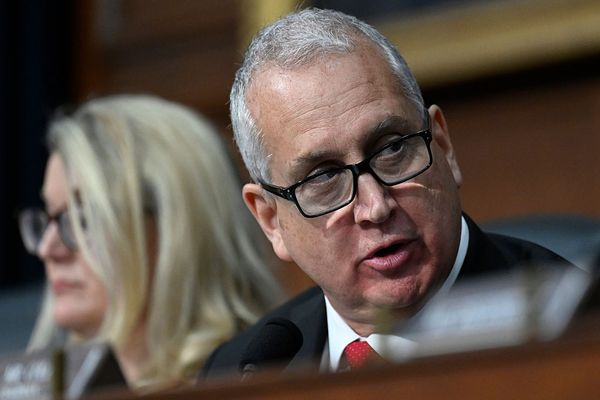
When Andrew Brennen thinks about the US supreme court deliberations over race-conscious admissions, he reflects on his parents, both attorneys, and his brother. In 2009, his father, David, became the first Black dean of the University of Kentucky’s law school since the state desegregated its colleges and universities.
“Had they not had access to higher education that they received, who knows what they would’ve been doing,” Brennen, who graduated from the University of North Carolina at Chapel Hill in 2019, says. “I’m thinking a lot about how different my life, my brother’s life, would be if affirmative action hadn’t been in place.”
On Monday, as the US supreme court hears oral arguments in cases against the University of North Carolina and Harvard University, the fate of race-conscious admissions is under threat. Civil rights attorneys and experts alike worry, following the high court’s decision to overturn Roe v Wade, that the court’s rightward tilt could spell their end.
For decades, the supreme court has consistently upheld that colleges and universities can take limited consideration of a student’s race and ethnicity as a factor when they assess which students to accept. In the 1960s, after John F Kennedy first ordered government contractors to “take affirmative action” to combat racial discrimination, colleges and universities developed policies to further diversify who enrolled.

The idea met its first challenge in 1978, in a case involving Allan Bakke, a white man who was denied admission to the University of California at Davis medical school. The court concluded that race could be factored in the admissions process but stopped colleges from setting racial quotas. That set the precedent until 2003 when, in a challenge by a white student denied admission to the University of Michigan Law School, the court upheld race as a consideration in admissions under the 14th amendment’s equal protection clause.
In the last decade, the conservative activist Edward Blum has led challenges seeking to curtail such constitutional protection, mostly recently in a 2013 case gutting the Voting Rights Act. In 2016, the US supreme court narrowly voted to uphold race-conscious admissions in a Blum-backed case by Abigail Fisher, a white woman denied admission to the University of Texas at Austin.
In Blum’s latest effort, a group of students assembled under the banner of Students for Fair Admissions (SFFA) argue that admissions policies at Harvard University and the University of North Carolina at Chapel Hill discriminated against Asian American students (in UNC’s case, they argue that the admissions policy discriminated against white and Asian American students).
Without race-conscious admissions, the number of Black, Latino and Indigenous college students in particular appears likely to fall across the country. A comprehensive study of California’s colleges and universities found that enrollment of Black and Latino students suffered after voters approved a state ballot initiative banning affirmative action at public entities in 1996.
Beyond the numbers, colleges and universities, particularly at selective institutions like Harvard, would lose experiences that admissions data fails to capture – an education in a multiracial environment and the opportunity for mutual support among students of color.
Polling from the Pew Research Center shows that most Americans believe grades and test scores, rather than one’s race and ethnicity, should determine whether students should be admitted to college. Yet current and former students at Harvard and UNC say that such measures of merit are unevenly accessed in a systemically racist society. Eliminating race from consideration would amount to failing to recognize how students’ backstories shape their lives and eventually shape institutions’ culture.
“I was never afforded the benefit of not thinking about racial identity,” says Kylan Tatum, a sophomore at Harvard. “Removing the consideration of race – it wouldn’t allow me to be considered as a person.”
Tatum, whose own family history – including American enslavement on their mother’s side and Vietnamese wartime ancestry on their father’s – shaped their own view of American society, worried about what the elimination of race-conscious admissions would mean.

“If you have a decreased number of Black, Latinx, Indigenous students on campus, there’s going to be less opportunity to create diverse friend groups that expose you to worlds that you may not be aware of,” Tatum says. “It’ll have systemic effects, but it’ll also have very personal effects on all students at these institutions.”
Chelsea Wang, a Harvard sophomore who grew up in China before she went to high school in suburban New Jersey as a teenager, noted that the plaintiffs in the cases against Harvard and UNC portrayed “affirmative action as a zero-sum game between Asian Americans and other people of color”.
Students for Fair Admissions “is using Asian Americans as a wedge to further certain white conservative goals”, Wang says. “I don’t want Asian Americans to be used as pawns.”
Wang says before she went to school in the US, she and her family felt sympathetic to misleading claims that affirmative action took opportunities away from Asian American students. “I believed that it wasn’t beneficial to me,” she says. That changed as she cultivated a more diverse friendships and immersed herself in the history of American racism after the murder of George Floyd – around the time she started applying to college.
“Without affirmative action, I would not have the community that I have today,” Wang says. “I would not believe in the same values of justice that I currently do.”

Cecilia Polanco, who graduated from the University of North Carolina at Chapel Hill in 2016, says they would be disappointed but unsurprised if the supreme court eliminated race from admissions consideration. Polanco, whose parents migrated to California during the Salvadorian civil war, says that many fail to understand the value of a diverse campus in challenging students’ worldviews.
“A lot of the assumption is that someone less qualified than me took my place. That’s not what affirmative action does,” Polanco says. “It offers support to students who are just as qualified and may have different life experiences.”
Tatum says ending race-conscious admissions could create an environment that isn’t reflective of society as a whole: “I don’t think you can even say that you’ve fully gotten an education without it.”
Racial and ethnic background is just one of many factors that inform admissions decisions. Still, current and former students alike told the Guardian that their racial identities inevitably shaped who they were, as detailed in their far-ranging experiences from their college application essays – the daughter of immigrants who dreamed of attending UNC; the aspiring Harvard student who wanted to escape the isolation of being one of a few Black students at her Kansas City private school; the Black queer kid who escaped stereotyping in Kentucky to attend UNC.
“In a world imagined by the petitioners where admissions officers aren’t able to consider race, does that mean my essay for admissions needs to be redacted?” Brennen, the UNC graduate, wondered. “These things are so core to my identity.”
Sarah Cole, who graduated from Harvard College in 2016 and from its Graduate School of Education in 2017, says if race-conscious admissions were banned, it would “be clear to students that the fullness of their identity isn’t valued, and it will make them less willing and less likely to choose those spaces”.
Now an assistant principal at the Social Justice school, a charter school in north-east Washington DC, Cole recalled that during her freshman year, in 2012, a white student had published an op-ed for the student newspaper decrying affirmative action when the US supreme court took up Blum’s earlier case against the University of Texas at Austin, sparking debate on campus.
In that moment, Cole saw a bitter reminder: she had met extraordinary people within the school’s Black community, but her classmates didn’t see them that way.
Removing consideration of race would “validate those beliefs”, she says. “They think we are incompetent, which is frustrating,” Cole says. “It would put an unfair burden on students of color to feel like they have to be exceptional.”

Years later, as protests swept across campus the summer after Michael Brown was killed in Ferguson, Missouri, Cole, who grew up in Missouri, found solidarity with other students who shared her background as she and others protested.
“That’s another moment where, in retrospect, I can be grateful for race-conscious admissions,” Cole, who was president of the Black Students’ Association at Harvard at the time, says. “If not for that, I probably wouldn’t have had the parts of the Black community that I did have to be able to rely on and be comfortable and heal after the experiences that we were having on campus.”
Cole plans to take some of her students on a field trip to attend rallies outside the supreme court as justices hear arguments. She has reminded them that even if the court invalidates race-consciousness in admissions, the fullness of their identities remains important.
“They need us there,” Cole says of universities. “Oftentimes, privileged students who end up at places like Harvard have no clue what the majority of other people are actually dealing with in the real world. They need to have our voices there. Our leaders will not be strong leaders if they don’t have a diverse student body to learn from.”
Brennen, who graduated from UNC in 2019, remembered walking through campus as an undergraduate when a white supremacist rally took place around Silent Sam, a monument given to the university in 1909 in remembrance of fallen Confederate soldiers. He thought of not just the Black women and trans student leaders behind the movement to take down the statue but also the multiracial coalition of support they fostered. That wouldn’t have been possible without race-conscious admissions, he says.
“There’s a school of thought around this case that perhaps there’s a certain point at which affirmative action might no longer be needed. Some of the folks on the side of the plaintiffs think that we’ve reached that point, that our institutions are sufficiently integrated,” Brennen says. That sentiment echoes what Justice Sandra Day O’Connor concluded in her opinion from 2003: “We expect that 25 years from now, the use of racial preferences will no longer be necessary.”
“The situation around Silent Sam, the consternation around taking down a Confederate monument, speaks to how inaccurate this narrative is,” Brennen added. “We’re still in the midst of dealing with and reconciling with racial injustice. We haven’t reached this point that it’s no longer needed.”







